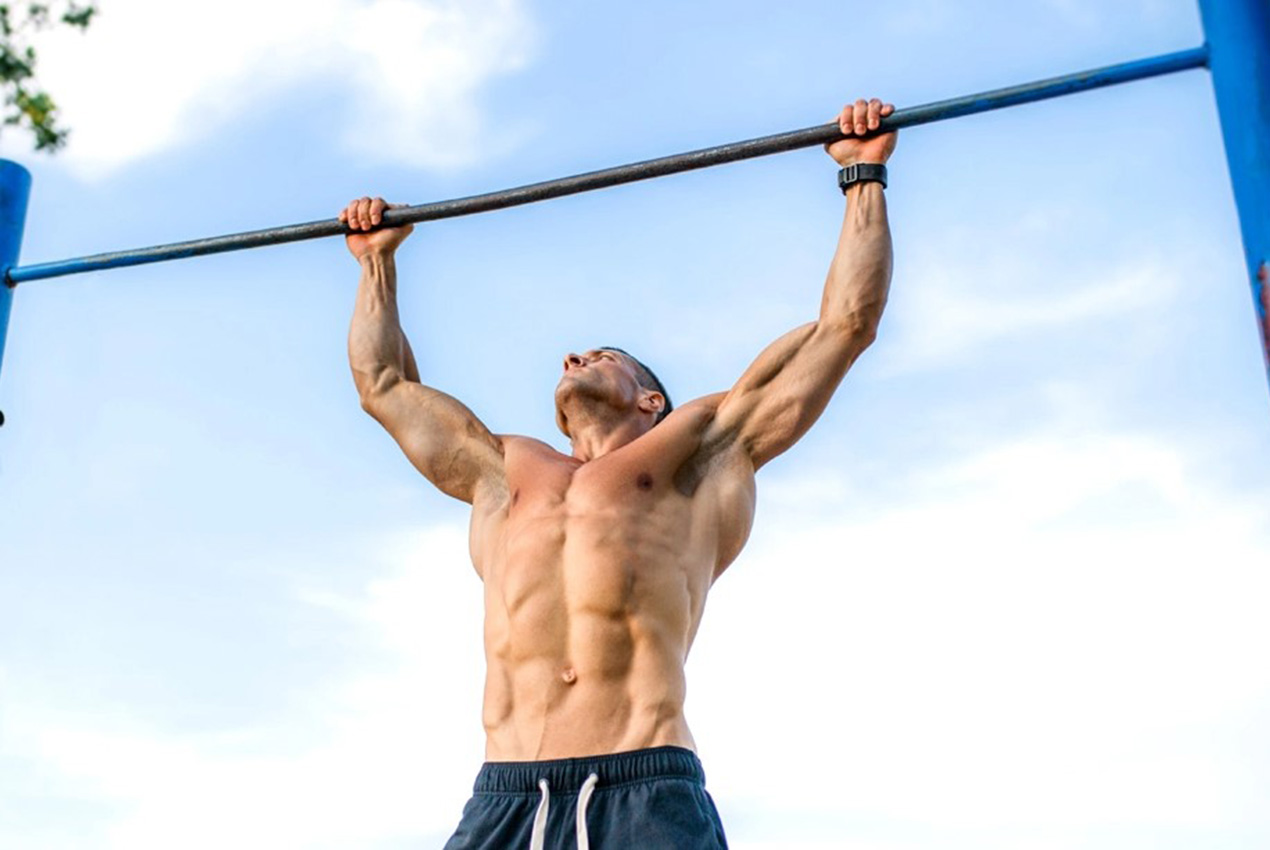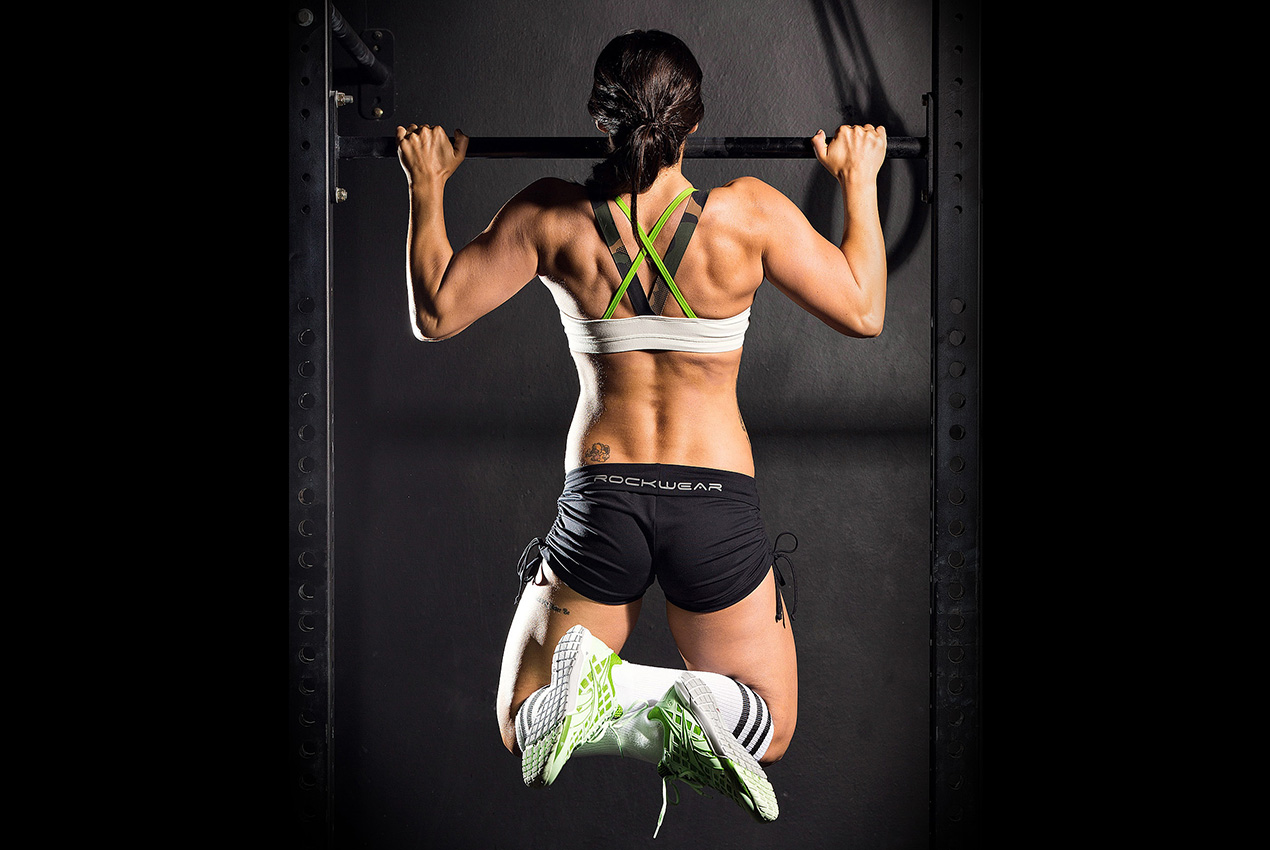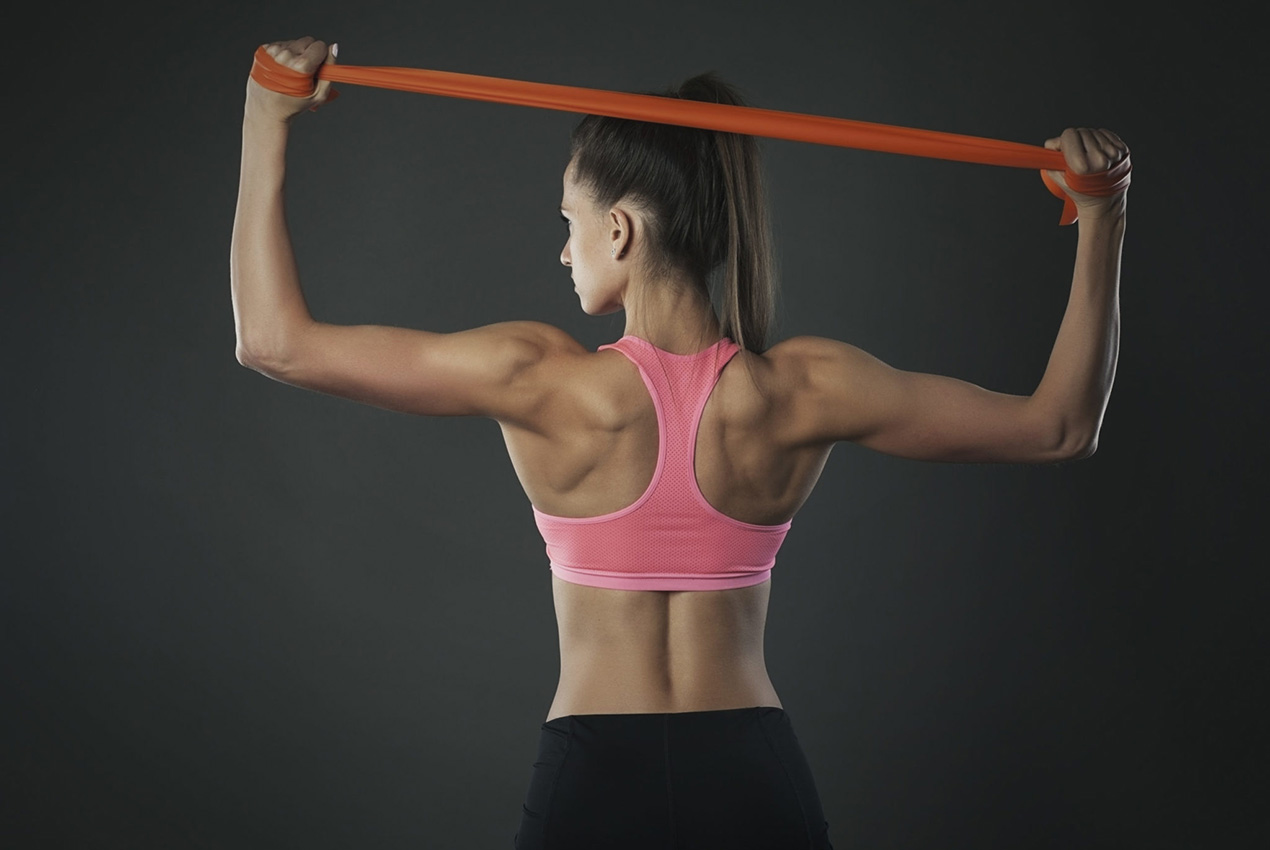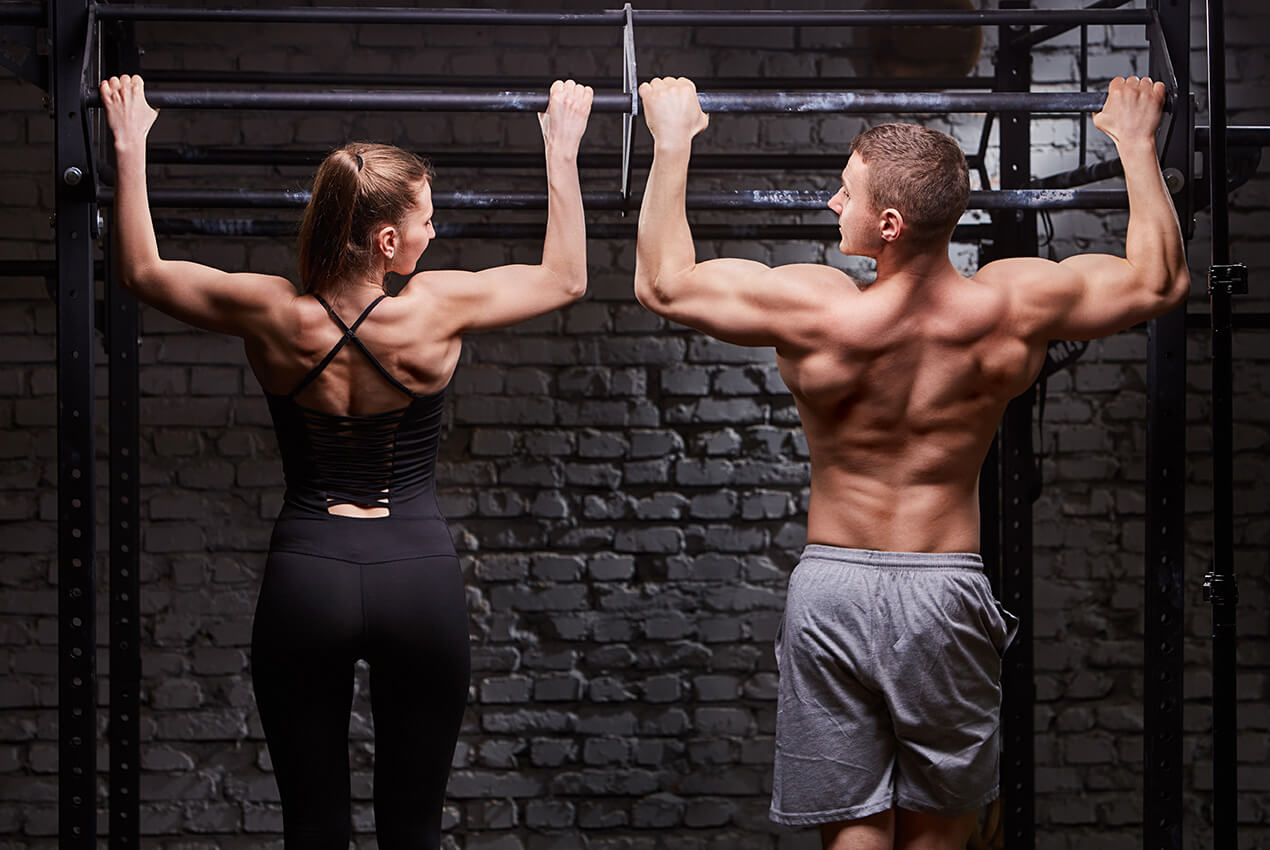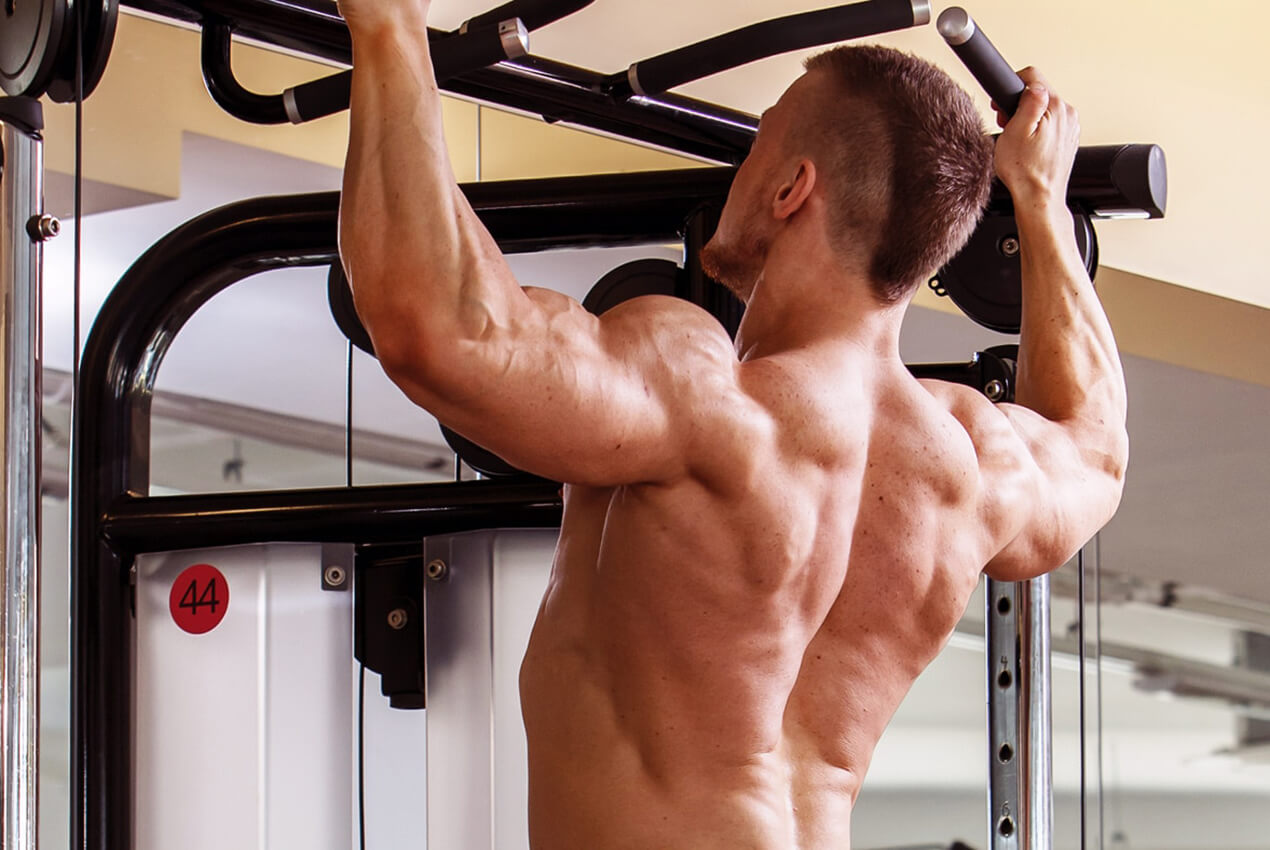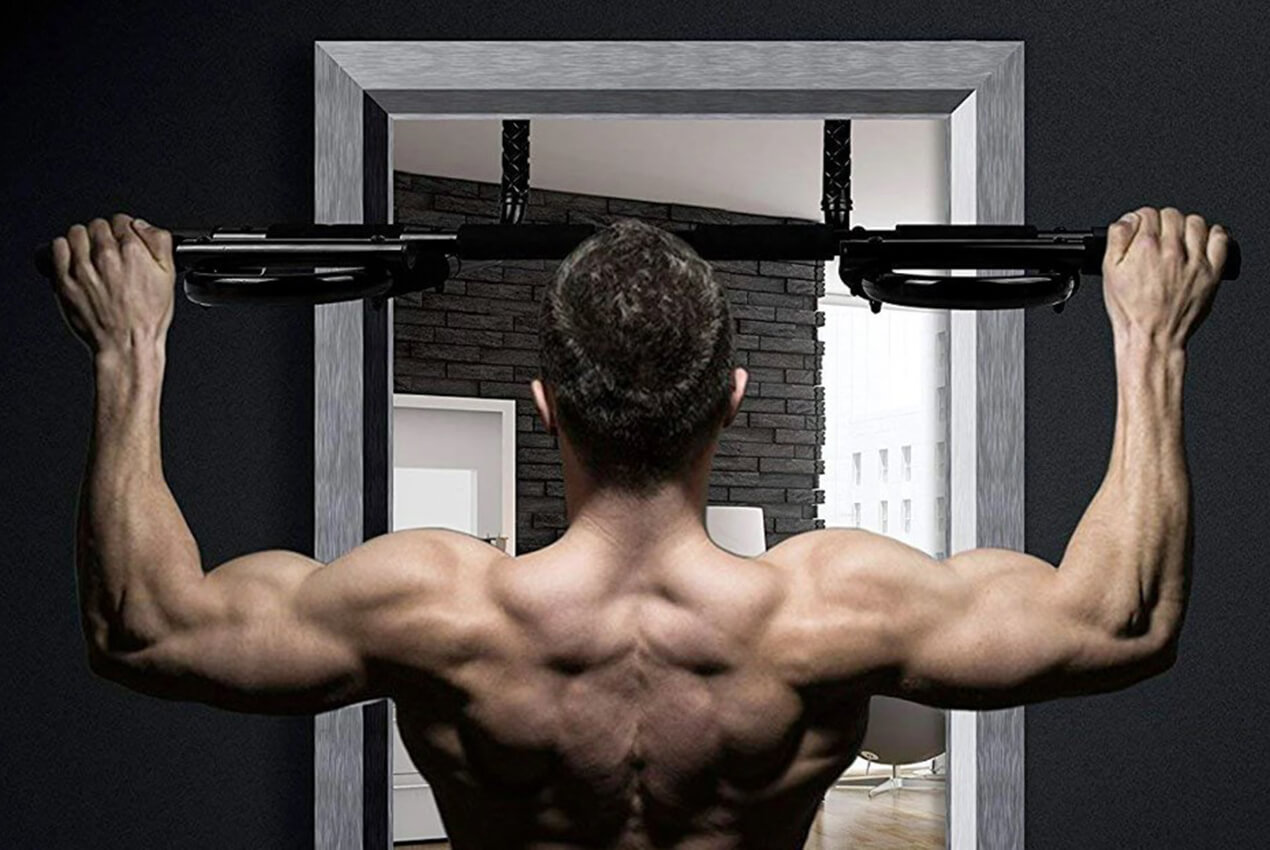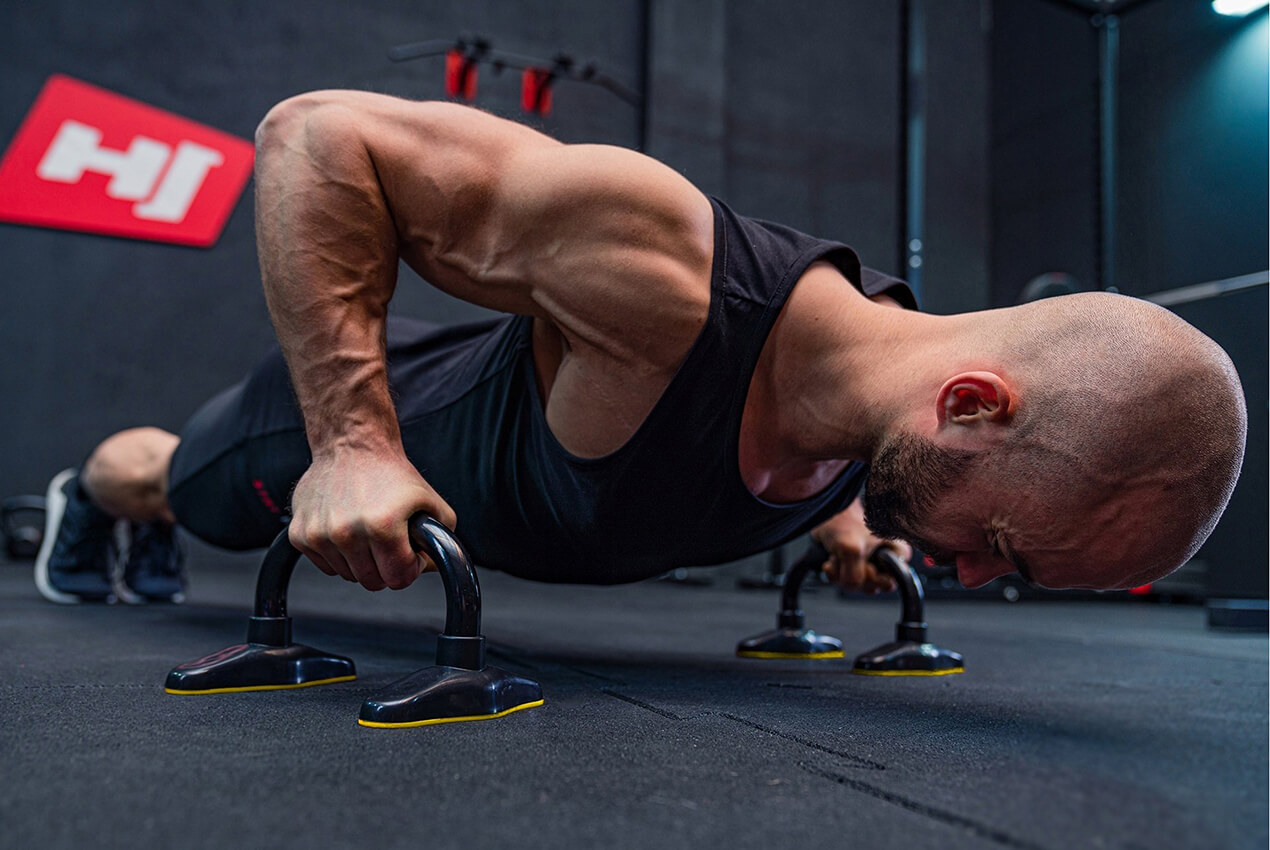You’re in the gym, and you see the squat bars. You remember how challenging pull-ups can be, but you don’t want to give up on that chiseled back just yet.
What do you do? Fortunately, there are plenty of great pull-up alternatives that can help you achieve the same results.
You may think of the pull-up bars as just a tool for doing pull-ups, but there’s so much more you can do with them. In this article, we’re going to show you some of our favorite exercises for the pull-up bars.
The pull-up is one of the most effective exercises you can do for your back. It strengthens the muscles along your spine, as well as your chest, shoulders, arms, and core. Pull-ups also improve your grip strength and bone density.
But if you’re not quite able to do a pull-up yet, don’t worry. We’ve got some great substitutes for you to try.
Is pulling up a good exercise?
Yes, pull-ups are excellent exercises for your back. Not only do they target your spine muscles, but they also work your biceps, triceps, and shoulder blades. Plus, they’re a great way to build core strength and stability.
There are a few things to keep in mind when doing pull-ups, though. First, make sure you have a good grip on the bar. Second, don’t jerk your body up – use a slow and controlled motion. And finally, don’t forget to breathe!
The purpose of pulling up
When you’re doing a pull-up, you’re working several different muscles at once. Your latissimus dorsi, or “lats,” are the large muscles that run along the sides of your back.
Your biceps, which are the muscles on the front of your upper arms, also get a workout. And your middle and lower trapezius muscles, which are in your upper back, also get involved.
The purpose of pulling up is to target all of these muscles and to build strength in your back. The benefits of doing pull-ups include increased muscle mass, improved posture, and better spine health.
Achieving your first pull-up
It can be tough to do your first pull-up. In fact, most people never manage to do a single pull-up. But don’t worry, we’re here to help.
The first step is to master the pull-up hanging position. This is basically just getting comfortable hanging from the bar with your weight supported by your hands and arms. Once you’ve got that down, it’s time to start working on your pull-up form.
The best way to do your first pull-up is to start with negative reps. This means lowering yourself down from the bar instead of pulling yourself up. You can also use a band or assisted pull-up machine to help you get started.
Once you’ve got the hang of things, it’s time to start slowly adding weight. Try using a weight belt or a weighted vest to increase the load.
And finally, don’t forget to focus on your breathing. Exhale as you pull yourself up, and inhale as you lower yourself down. Don’t forget to do a pull-up count.
What muscles do the pulling-up train?
The primary muscles used when doing pull-ups (or assisted pull-ups, or jumping pull-ups) are the latissimus dorsi, which are the large, triangular muscles that span the width of your back.
These muscles are responsible for pulling your arms down and back, which is the opposite motion of what you’re doing when you do a pull-up.
Your biceps, which are the muscles on the front of your arms, also play a role in pull-ups. They help to stabilize your body and control the movement of your elbows.
And your traps, which are the muscles that run along the tops of your shoulders, also help to stabilize your body.
Squatting rows
The door and towel row is a great alternative to pull-ups for a home workout. The idea is simple: get into a squatting position and row your body weight. This is a horizontal pull, so it’s more like a seated cable row than a pull-up. However, this is going to build a lot of the same back muscles without difficulty.
Simply put, the exercises may be performed almost anywhere and with minimal modification. A different doorframe vertical pull-up is what this is. A pushup is less similar to it sitting cable rows.
Your back muscles can be developed in a stress-free manner in this manner. In lieu of pull-up exercises, there are these doors and towel rows.
Band pull-aparts
Pull-along equipment and resistance bars are not necessary. When battling “slouched shoulder,” these exercises might assist increase upper back strength and stamina. Although there isn’t a straight pull-up substitute, using resistance bands targets the same muscle regions.
All pulling tactics will start with this. Pull-apart exercises are suitable for at-home workouts because they require less resistance. A good warm-up and cool-down are both achieved with the band pulling away, enhancing prevention and control of strength.
Pull-up hold and negative press
If you have bars, these are great alternatives to standard pull-ups. You get stronger with this lower part, making the muscle-building and skills of the basic pull-up easier!
Pull-ups can be performed with simple modifications: Simply increase hold time, lower time, and/or the number of reps. These are critical to building the length of the biceps, legs, or traps and also capacity.
Chin-ups
Chin-ups have become an alternative form of pull-ups and are incredibly popular. It is a great vertical pull exercise for muscle strengthening. Lower back muscles are more focused and relieve the tension from the upper back muscles.
Those who do it are more likely to have a healthier life with fewer complications. It is able to work arms, latches, and rhomboids as well.
Elevated-foot chin-ups
When using your gymnastics rings, it’s easy to do the lifts with the elevated leg chin up. There’s a more easy variation of the chin-up where your legs carry some weight.
This emphasizes the arm and the trunk while developing the fundamental movements necessary to perform pullups and chin-ups. It is beneficial in improving your strength as well as your ability at lifting!
Barbell rows
The bent-over rows of barbells offer an excellent choice of exercises for beginners. It is easier to carry and builds a strong upper back as compared to pull-ups.
If muscle tension lets up, this is one of the best places to start. Combine that with bodyweight movements such as ring rows and you are well on your way.
Additionally, you can get acquainted with the best crossfit barbells.
Rows inverted
The gym bodyweight row provides a great alternative to a pullup. The reverse row, however, has a horizontal pull. This emphasizes arms, ribs, and lower trapezoids. You can also make the rings row as usual.
Ring rows increase the elasticity of ring girders by using gymnastic rings. You can easily increase your feet’ weight by increasing the distance between rings.
It is possible for a person to raise his/her head or move his/her feet. Whatever your level of performance is, you’ll train using bodyweight rows.
What are the benefits of using pull-up bars?
A traditional pull-up bar is one of the most versatile pieces of fitness equipment you can own. Not only does it allow you to do pull-ups and chin-ups, but it also doubles as a perfect spot for suspension training exercises like suspended push-ups and rows.
Pull-ups are one of the best exercises you can do for your back. They strengthen your upper body muscles, as well as your chest, shoulders, arms, and core. Pull-ups also improve your grip strength and bone density.
The best thing about a pull-up bar is that it’s so versatile. You can use it at home or in the gym, and it doesn’t require much equipment or space.
What are the benefits of performing pull-ups?
Performing pull-ups can provide a variety of benefits for your body. For one, they help to build a strong back, chest, shoulders, upper body muscles, shoulder blades, and arms.
They also improve your overhand grip and underhand grip strength, bone density, and markers of health. Additionally, pull-ups challenge your body in a unique way and can help to improve your mood.
What to look for in a good substitute exercise for muscle ups?
When looking for an effective substitute exercise for muscle-ups, you want one that targets the same muscles. That’s why pull-ups are such a great choice—they target the muscles in your back, and shoulder joint, which is crucial for spine health.
There are so many good substitutes for pull-up exercises, such as body weight rows, dead hang, assisted pull-ups, seated cable rows, upside-down push-ups, and others.
One of the best pull-up alternatives is the inverted row. This exercise is very similar to the traditional pull-up, but it’s performed on a horizontal bar instead of a vertical one. This makes it a good choice for beginners or people who don’t have access to a squat bar.
Lat pulldowns are another good option from the best pull-up alternatives. They target the muscle groups in your back and shoulder, and they can be performed with a variety of different grips (overhand and underhand grip) to target different muscles.
Best alternatives to pull-ups for your back muscles
If you don’t have access to pull-up bars or just want to mix up your workout routine, there are plenty of alternative exercises that work the same types of muscles. Here are some of the best exercises to target your back muscles:
Dumbbell rows: This exercise targets your lats, middle back, and biceps
How to do it: Hold a dumbbell in each hand, bend forward at the hips, and let the weights hang down in front of you. Bend your knees and place your hands on a bench for support.
Row the weights up to your sides, keeping your elbows close to your body. Lower the weights back down and repeat.
Seated cable rows: This exercise targets your lats, middle back, rear delts, and biceps
How to do it: Attach a straight-bar attachment to a low pulley and sit with your legs bent at 90 degrees and your feet flat on the floor. Lean forward at the hips and let the bar hang down in front of you.
Bend your elbows and pull the bar toward your belly button, squeezing your shoulder blades together. Return to the starting position and repeat.
Renegade rows: This exercise targets your lats, middle back, rear delts, traps, abs, and obliques
How to do it: Start in a pushup position with your feet hip-width apart and place your hands on two dumbbells. Keeping your core engaged, row one dumbbell up to your side while keeping it close to your body. Lower it back down and repeat with the other side.
Tips to help you master the alternatives
Fortunately, there are many excellent pull-up alternative exercises that have comparable activation levels of muscles involved with the traditional pull-up version. Some tips for performing these alternatives are as followed:
- Before you start, make sure the handles are set at about shoulder-width apart. If they’re too wide or too narrow, it’ll be harder to keep proper form.
- When you’re doing an inverted row, keep your body in a straight line from your head to your heels. This will ensure that your back muscles are doing the majority of the work.
- And finally, don’t forget to add weight! Can hold 3-pound weights to perform pull-up alternatives | Inverted row can work pull muscles in unison | Pull-ups are effective to increase back strength and width.
Variations on traditional pull-ups
Here are some examples of different pull-up variations that you can try out the next time you’re looking for a change-up:
Kneeling lat pulldowns: This exercise can be done with a lat pulldown machine or a resistance band. Start by kneeling on the ground and holding the band or machine with both hands. Pull the band or weight down to your chest, keeping your back straight and abs engaged.
Kettlebell swings: Start in a standing position with feet shoulder-width apart and a kettlebell in front of you. Hinge at the hips and grab the kettlebell with both hands. Swing the kettlebell back between your legs, then explosively drive your hips forward to swing the kettlebell up to chest height.
Bodyweight rows: Start in a plank position with hands about shoulder-width apart on a sturdy surface like a table or countertop. Brace your core and row your body up towards your hands, keeping your back flat. Lower back down to start and repeat.
Overhead dumbbell press: Start seated or standing with a dumbbell in each hand, palms facing forwards. Press the dumbbells overhead, extending your arms until they’re straight. Lower back down to start and repeat.
Back bridge push-ups: Start lying on your back with your feet flat on the ground and palms flat on the ground by your sides. Drive your heels into the ground and lift your hips and upper body off the ground, forming a straight line from shoulders to feet. Bend your elbows and lower your body towards the ground, then press back up to start.
Can you do pull-ups without a pull-up bar?
This is a great question, and the answer is yes! There are many ways to do pull-ups without a bar.
One way is to use a suspension trainer, such as TRX. This piece of equipment uses your own body weight to provide resistance and can be hung from any sturdy anchor point.
To do a TRX pull-up, simply place your hands on the handles and step back so that your body is in a straight line from your heels to your head. From there, engage your back muscles to pull your body up until your chin clears the handles.
Another way to do pull-ups without a bar is by using a resistance band. These can be looped around any sturdy anchor point, and then you place your feet or knees inside the loop.
To do the exercise, hold the band with an overhand grip and pull yourself up until your chin clears the band.
One final way to do pull-ups without a bar is by using a towel. This method can be done virtually anywhere – all you need is a towel and a sturdy anchor point.
To do this exercise, hold the towel with an overhand grip and wrap it around the anchor point. From there, pull yourself up until your chin clears the towel.
What can I use if I don’t have a pull-up bar?
If you don’t have a pull-up bar, you can use a suspension trainer like the TRX. Suspension trainers are versatile pieces of equipment that allow you to do a variety of exercises, including suspended push-ups, rows, and lunges.
Another option is to use a band. Band exercises are a great way to strengthen your back and improve your grip strength. You can do band pull-downs, rows, and lat pull-downs.
What exercise can I do instead of pull-ups?
If you’re looking for an exercise to replace pull-ups, you can try a lat pulldown. A lat pulldown is a machine-based exercise that replicates the pulling motion of a pull-up. It targets the same groups of muscles as a pull-up, and it’s a great way to build strength in your back, shoulders, and arms.
To do a lat pulldown, you’ll need to find a weight machine at your gym. Sit down in the seat and grasp the bar with your hands shoulder-width apart. Lean back slightly and slowly pull the bar down to your chest. Pause for two seconds and then slowly press the bar back to the starting position.
5 No bar pull-up alternatives
Not everyone has access to a pull-up bar, and that’s OK. There are plenty of other exercises you can do to get a great back workout.
Here are five no-bar pull-up alternatives that will work your back, chest, shoulder blades, arms, and core:
- Inverted row: This pull-up alternative can be done with a barbell in a power rack, smith machine, or TRX suspension trainer.
- Australian pull-ups: This bodyweight exercise can be done with a TRX suspension trainer or an Olympic barbell placed in a power rack.
- Seated rows: This pull-up alternative can be done with a barbell or dumbbell.
- Renegade rows: This exercise can be done with dumbbells or kettlebells.
- Chin-ups: This pull-up alternative can be done with a chin-up bar or resistance bands.
Bridge push-ups
Bridge push-ups are a great alternative to traditional pull-ups. They work for the same muscle groups, but they put less stress on your joints.
To do a bridge push-up, stand in a high plank starting position with your hands on the ground and your feet hip-width apart. Then, lower your chest to the ground and push back up to the starting position. Keep your core engaged the entire time.
If you want a challenge, you can try holding a weight in one hand while you do the push-ups. You can also try moving your feet closer together to make the exercise more difficult.
Renegade row
The renegade row is a great pull-up alternative exercise to substitute for muscle-ups. It works the same muscles but doesn’t require the same level of upper body strength.
To do a renegade row, stand in a push-up starting position with your hands on a pair of dumbbells. Keeping your core engaged, row one dumbbell up to your chest, then lower it back down. Repeat with the other arm.
Doing renegade rows will help you build the strength you need for muscle-ups, as well as improve your grip strength and bone density.
Bodyweight row
Bodyweight rows are a great exercise for your back, and they can be done with a pull-up bar or TRX suspension trainer.
To do a bodyweight row, simply place your hands on the bar or suspension trainer at about shoulder-width apart. Hang from the bar with your feet off the ground.
Then, row your body up to the bar, leading with your elbows. Squeeze your back muscles at the top of the move, and then lower yourself back down to the starting position.
Lat pulldowns
Lat pulldowns are a great alternative to pull-ups if you don’t have the upper body strength to do them yet. To do a lat pulldown, sit on a lat pulldown machine and grasp the bar with an overhand grip, palms facing away from you.
Keeping your core engaged, pull the bar down to your chest, leading with your elbows. Pause for a moment, then slowly return the bar to the starting position.
Towel rows
Here’s how to do it:
- Wrap a towel around the bar, and grip it with your palms facing each other.
- Hang from the bar with your feet off the ground.
- Pull yourself up until your chin is over the bar.
- Lower yourself back down to the starting position.
Muscles worked in a pull-up
When you do a pull-up, you’re using many different muscles in your back, arms, and core. The main muscles worked are the rectus abdominis, erector spinae, latissimus dorsi, biceps brachii, and trapezius.
The rectus abdominis is your “six-pack” muscle. It runs from your sternum to your pelvis and helps to flex your spine.
The erector spinae is a group of muscles and tendons that runs along your spine. It helps to extend and rotate your spine.
The latissimus dorsi is a large muscle in your back that extends from your lower back to your armpit. It helps to pull your arm down and back.
The biceps brachii is a two-headed muscle that runs from your shoulder to your elbow. It helps to flex your elbow and supinate (turn) your forearm.
The trapezius is a triangular muscle that extends from the base of your skull to the middle of your back. It helps to stabilize your shoulder girdle and allows you to shrug your shoulders
Muscles targeted by pull-ups
There are a few key muscles that pull-ups target, namely the latissimus dorsi (lats), the middle and lower trapezius, the rhomboids, the rear deltoids, and the biceps. But that’s not all—pull-ups also work your core muscles, including the rectus abdominis, transverse abdominis, and obliques.
And don’t forget about the muscles between your shoulder blades—the traps, lats, and rhomboids. These muscles are often neglected in other exercises, but they play a major role in stabilizing your shoulder girdle.
Conclusion
So, what can you do if you don’t have a pull-up bar or find pull-ups too difficult? There are plenty of great pull-up alternatives that can help you build strength and muscle in your upper body.
One of the best-assisted pull-up machines is the lat pull-down. This machine allows you to adjust the amount of weight you’re lifting, making it a great option for beginners. You can also do inverted rows using a suspension trainer or a barbell.
If you want to work your back and biceps, try doing bent-over rows. This exercise can be done with a barbell, dumbbell, or resistance band. For a complete upper-body workout, try a combination of these exercises. You’ll be surprised at how strong you’ll become in just a few short weeks.
So, if the pull-up is too difficult for you, or you’re just looking for some variety in your back workout routine, give some of these alternatives a try!
FAQs about pull-up alternatives
Below are some frequently asked questions about pull-up alternative exercises.
What are some good pull-up alternatives?
Some good exercises that target the same muscles as pull-ups include chin-ups, lat pull-downs, and inverted rows.
Do I need to use weights for these exercises?
No, you don’t need to use weights for any of these exercises. In fact, using your body weight is often more effective because it allows you to better control the movement.
How many reps should I do?
It depends on your goals and fitness level, but a good range to aim for is 8-12 reps per set.
Can I do these exercises every day?
Yes, you can do these exercises every day if you’d like. Just be sure to listen to your body and take a rest day if you’re feeling overly sore or fatigued.
What can I sub for muscle-ups?
We mentioned some interesting and effective substitutions for pulling up. You can choose from a wide variety of pull-up alternative exercises.
What to do if you can’t do a muscle-up?
You won’t be able to perform a bar muscle up if you can’t raise yourself high enough to cross the bar. Having the absolute strength to pull high enough is just as important as harnessing the power from your kip to assist elevate your body.
How can I do muscle-ups at home?
If you have the necessary equipment properly installed at home, then there won’t be a problem. In the summertime, you can do training outside in dedicated sports places.
What exercise works the same muscles as pull-ups?
Exercises like dumbbell rows, seated cable rows, and renegade rows are the best pull-up alternatives. However, there are many more exercises that work the same as basic pull-ups.


